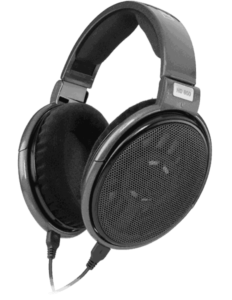When you mix, nothing beats a quality set of studio monitors in a well-crafted acoustic space. But what if your room has bad acoustics? What if you want to work late at night? What if you want to mix on the go? If these situations describe you, there may be no choice but to use headphones.
Headphones are great for monitoring and identifying small details in a project, but they carry problems, such as an unnaturally wide stereo image, skewed frequency response and the lack of cross-feed between the left and right ears. Nevertheless, many professional musicians, engineers and producers regularly mix in headphones, of their own choice or as needed. So, how do you create a great sounding mix with headphones? Here are some suggestions.
Avoid hard panning
When you listen to studio monitors, the sound from the left speaker reaches not only the left ear, but also the right one (and vice versa). Because of this, tightly panning the track on the speakers does not completely remove it from your opposite ear. This does not apply to headphones – when the track is hard-panned in the headphones, the sound is completely absent on the opposite channel. So when you mix in headphones, try to minimize the use of fanatically wide stereo. This will result in a more natural sound.
— See also: How much does it cost to write a song? —
Optimize your headphones as much as possible
Headphones create an unnatural sound field – it seems that the sound comes from your head, and not around you. Their frequency response is far from flat. To compensate for these problems, you can use software products such as Waves Nx and Sonarworks Reference 4. Waves Nx solves cross feed problems by accurately reproducing the depth, natural reflections and stereo image of a high-quality set of studio monitors. Sonarworks Reference 4 overcomes the physical limitations of your headphones, helping you get a flat frequency response so you can make informed decisions when mixing.
Use monitors for reference
When mixing on studio monitors, it would be nice to use headphones to test your mix after you think the track is complete. This is the easiest way to make sure your project sounds great on all devices. The same goes for headphone mixing. Find your pair of speakers and use them to periodically check your performance. Otherwise, the work may not sound so good on other media.
Invest in open earphones

Closed ears are great for recording and accumulating vocals, as they prevent the sound from coming out and leaking into the microphone. However, they also retain pressure inside the headphones, creating false low frequencies. While these basses make listening more fun, they also distort your perception of the frequency response. That’s why open headphones, such as the Sennheiser HD 650 and AKG K712 Pro, show better values and don’t bother the ear of a mixing engineer.
— See also: How to improve the quality of tracks on SoundCloud and YouTube? —
Get high-quality headphone amp
When using studio monitors, sound engineers spend maximum money on speakers, controllers, and professional-grade digital-to-analog converters. Why not? The same is true if you mix in headphones. This is where the headphone amplifiers appear, guaranteeing that you will hear every detail of your mix with utmost precision and accuracy. Rupert Neve Designs RNHP brings together legendary circuit design experience in a reference-class headphone amplifier. Little Labs Monotor provides you with two audiophile-level amplifiers in one enclosure, and the SPL Phonitor 2 combines an amplifier with speaker emulation, spatial processing and much more for monitoring. Do you mix on the go? Then you will love Apogee Groove – it combines excellent headphone and USB amplification.


